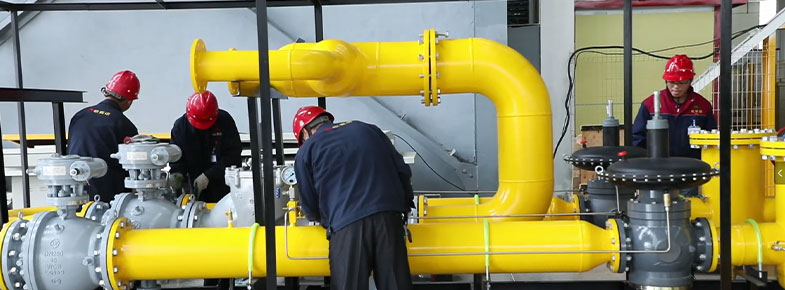
Sep . 22, 2024 18:46
Back to list
high pressure regulators
Understanding High Pressure Regulators Functions and Applications
High pressure regulators are essential devices designed to control the gas flow and pressure in various industrial applications. These regulators are crucial components in systems where high-pressure gas must be reduced to a lower, usable pressure for safe and efficient operation. Understanding the functionality, types, and applications of high pressure regulators can help enhance safety and efficiency in a wide array of fields, from manufacturing to energy production.
Functionality of High Pressure Regulators
At its core, a high pressure regulator serves to maintain a constant output pressure, irrespective of changes in inlet pressure or downstream demand. Incoming gas from a high-pressure source is reduced by the regulator to a predetermined, lower pressure. This is achieved through a combination of mechanical components, including a diaphragm, spring, and a valve that opens or closes to modulate flow. The reliability of these components is critical, as they must withstand the stresses imposed by high pressure and ensure accurate pressure control.
High pressure regulators employ safety features to prevent overpressure situations, which can lead to potentially hazardous conditions. These safety mechanisms include pressure relief valves and backflow prevention systems. Reliable operation is paramount, especially in industries such as petrochemical processing or medical gas supply, where even minor fluctuations in pressure can have significant consequences.
Types of High Pressure Regulators
High pressure regulators are categorized based on their design and application. The most common types include
1. Single-Stage Regulators These are typically used in applications where the inlet pressure remains relatively constant. They can quickly reduce high pressure to a lower output but are less stable under fluctuating inlet conditions.
high pressure regulators

2. Two-Stage Regulators These provide better pressure regulation, as they divide the pressure reduction into two stages. This design offers greater stability and is ideal for applications where the inlet pressure may vary significantly.
3. In-Line Regulators These are installed directly in the line of flow, making them ideal for process control applications.
4. Integral Regulators These combine a regulator and a flow meter into a single unit, streamlining the gas delivery system.
Applications of High Pressure Regulators
High pressure regulators are employed in a range of industries. In the oil and gas sector, they control the flow of natural gas and enhance safety during extraction and transportation. In the welding and metalworking industries, regulators manage the delivery of gases such as oxygen and acetylene, which are fundamental in metal fabrication processes.
Medical facilities use high pressure regulators to ensure the safe and accurate delivery of oxygen to patients, where precision and reliability are critical. Additionally, the chemical and pharmaceutical industries rely on these regulators to manage gas pressures in various production processes, ensuring compliance with safety and regulatory standards.
Conclusion
High pressure regulators play a vital role in maintaining safe and efficient operations across multiple sectors. By understanding their functionality and application, industries can leverage the benefits of these devices to enhance productivity and reduce risks. As technology advances, continuous innovations in regulator design and functionality will likely improve their accuracy, safety, and ease of use, supporting the demands of increasingly complex industrial systems.
Next:
Latest news
-
Safety Valve Spring-Loaded Design Overpressure ProtectionNewsJul.25,2025
-
Precision Voltage Regulator AC5 Accuracy Grade PerformanceNewsJul.25,2025
-
Natural Gas Pressure Regulating Skid Industrial Pipeline ApplicationsNewsJul.25,2025
-
Natural Gas Filter Stainless Steel Mesh Element DesignNewsJul.25,2025
-
Gas Pressure Regulator Valve Direct-Acting Spring-Loaded DesignNewsJul.25,2025
-
Decompression Equipment Multi-Stage Heat Exchange System DesignNewsJul.25,2025

